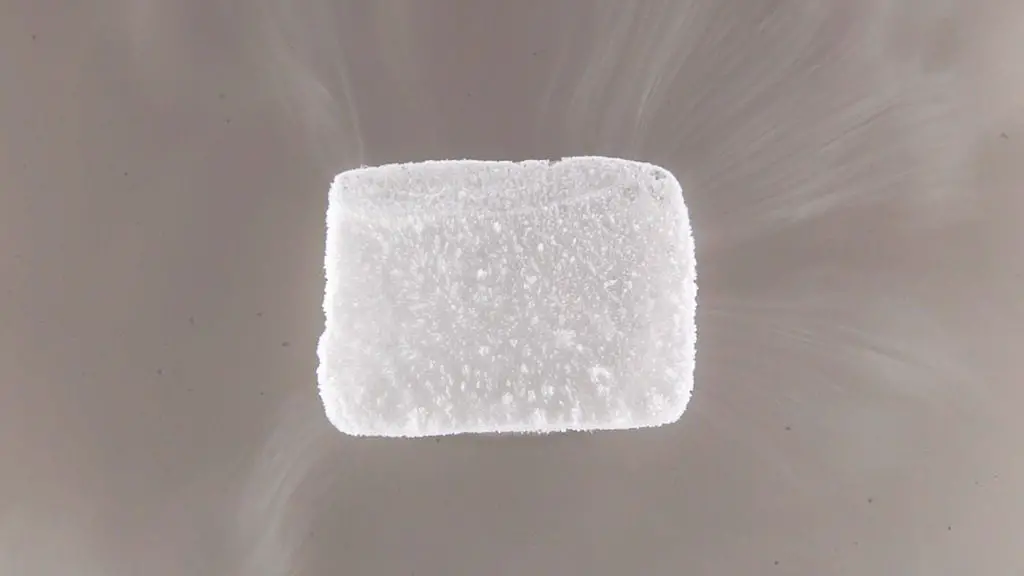In the language of science, matter can exist in so many distinct forms that are collectively known as the states of matter. Not to mention, there are at least seven states of matter such as Solid, Liquid, Gas, Plasma, Bose-Einstein Condensate, Degenerate Matter, and Fermionic Condensate.
It is not a hidden fact that under certain circumstances, all form of matter undergoes a phase transition. For example, when solid changes into a liquid, we call this phase change the process of melting. Or, when a liquid changes into a solid, we call this phase change the process of solidification.
Similarly, when a liquid changes into a gas, we call this phase change the process of vaporization. Or, when a gas changes into a liquid, we call this phase change the process of condensation.
These types of phase change come under the category of direct phase transition. Conversely, there is one more category of phase transition in which there is a bypassing of an intermediate state of matter.
Sublimation Definition in Physics
In physics, sublimation is a distinct type of phase transition during which a matter directly changes from solid to its gaseous form, bypassing the liquid state of matter. This process specifically occurs at temperature and pressure below the matter’s or substance’s triple point.
If you don’t know, a triple point of the matter is the specific pressure and temperature at which all three forms (solid, liquid, and, gas) of matter can coexist at thermodynamic equilibrium.
Moreover, the opposite of sublimation is known as deposition or simply desublimation. In other words, when a matter directly changes from a gas to its solid form, bypassing the liquid form of matter, known as a deposition.
Just to make things clear, when there is solid to gas transition, by definition, we call it sublimation. On the contrary, when there is gas to solid transition, we call it deposition.
Check out, Evaporation vs Condensation (Tabular Form)
Sublimation Process: An endothermic change??
First of all, the process of sublimation is definitely an endothermic change. According to the general definition of kinetic theory, the addition of heat allows a material or substance to gain energy.
Therefore, as a result, the molecules of substance can overcome the attractive forces between each other, hence becoming loosely bound to each other. Such is the case with the process of sublimation.
In order to bypass the liquid form, the process of sublimation requires additional energy. Hence, it comes in the category of an endothermic phase transition.
In order words, absorption of heat takes place during sublimation, which in turn provides additional energy to escape the liquid phase.
Editor’s Choice: Endothermic vs Exothermic – What’s the Difference?
Sublimation Examples
If you think, you can’t relate to sublimation examples in daily life. Well, here is your chance to think again…!!!
- Formation of dry ice
- The disappearance of naphthalene balls
- In forensic sciences
- Air freshener
- Even snow sublimates
- Freeze Drying, etc.
Must Read: Difference Between Crystalline and Amorphous Solid
Frequently Asked Questions
1. What is sublimation?
Ans. It is a type of phase transition in which a substance or material directly changes from a solid state to a gaseous state, bypassing the liquid state.
2. What is the difference between sublimation and deposition?
Ans. The primary difference between sublimation and deposition is that sublimation is an endothermic process (enthalpy increases). While on the other hand, deposition is an exothermic process (enthalpy decreases).
3. What is the enthalpy of sublimation?
Ans. The enthalpy of sublimation is nothing but the heat required to change one mole of a substance from a solid state to a gaseous state at a given combination of temperature and pressure.
Not to mention, the enthalpy of sublimation is also known as the heat of the sublimation process. Mathematically, it can be easily calculated by adding the enthalpy of fusion and vaporization.
That’s it for this post. If you like this article, share it if you like, like it if you share it. You can also find us on Mix, Twitter, Pinterest, and Facebook.
You might also like:
- Top 6 Verified Examples of Evaporation in Daily Life
- Top 6 Most Common Examples of Condensation
- Real-Life Gay Lussac Law Examples
- Top 6 Applications of Charles Law
- Top 6 Applications of Boyle’s Law
- Evaporation Definition, Process, Facts & Examples
